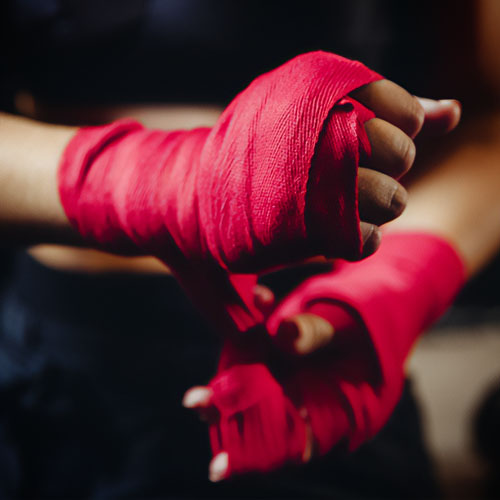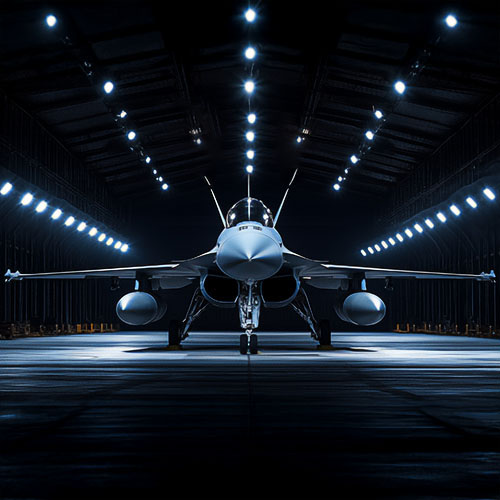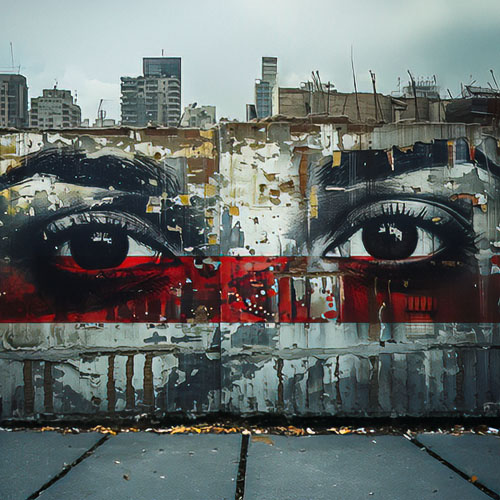Editor’s note: Several names and geographical locations have been altered to protect the lives of sources who were interviewed for this article. No substantial part of their story or history has been changed.
Drug Wars
For decades, Colombian guerrillas have orchestrated massive shipments of coke to the United States — as much as $60 million worth a week. Jonathan Franklin navigates the Amazon’s most treacherous regions with a commando police unit that infiltrates shrouded coca labs. Incredibly, he discovers, their strategy might just be working.
Captain Scott Bradford snaps on his combat helmet, grabs his automatic rifle, and jumps from the Black Hawk helicopter into the high grass. The wind whips the jungle canopy and vegetation into a whirl of leaves, branches, and chaos. Snipers lurk in the hills, land mines abound, and above us, armed with 3,000-bullet-a-minute mini guns, is a pair of Huey helicopters. Once the workhorses of Vietnam, these Hueys were recycled to the front lines of America’s new secret war in Colombia.
“Stay on the path,” yells Captain Bradford above the metallic clack of rotor blades. “We swept for mines but…” The rest of his answer is wiped away by the noise, yet the message is clear. Don’t go first. Don’t wander. Listen up!
“You know what they call these mines? Leg snatchers. If you don’t bleed to death, you’ll wish you did,” says Bradford, a muscular former Marine who spent 26 years as a member of the United States Marine Corps Forces Special Operations Command, and a veteran of the Iraq wars and the takedown of Saddam Hussein.
Bradford and two platoons of Colombian commandos have information that a secret cocaine factory is hidden nearby, in Caqueta province, a remote, paradisiacal corner of the Colombian Amazon. “They say this lab can [produce] three tons a week … and you get out the log book and you see Monday 300 kilos, 280 kilos on Tuesday … and you say, ’shit.’” Bradford explains this as he waits for the Colombians to debrief an informer who is leading us to the lab. At a conservative wholesale price of $10,000 a pound, the revenue from this single lab is $60 million a week. It’s a lot of cocaine to take out of circulation, and this can only happen if this joint commando force, Junglas, can reach the lab.
There isn’t much talking here in the jungle. Faces are deadly serious and helmets are cinched tight. Neck veins pulse. I watch as the sniper tightens the telescopic sight on his rifle while the medic chews on the strap to his earplugs. Each man has a label with his blood type sewn into his uniform.
Despite overwhelming firepower and intelligence advantages, ambushes are frequent, says Bradford as he points out the Huey and Black Hawks providing cover just above the forest canopy. Bradford stops talking and watches the helicopters hover over the jungle. “It was roughly at that height that the Colombian Army lost 19 men when a sister Black Hawk was blown from the sky by drug traffickers.”
The floors of the Black Hawks are now thickly armored, covered in huge Kevlar plates, making them bulletproof from ground fire. “It takes up so much weight that you have to fly with two fewer people, but when you hear that Thump! Thump’ Thump! [of bullets hitting the bottom of the chopper] you are really glad,” Bradford says. ’’That thing looks solid. But after they went down, all the wreckage could have fit in the back of an SUV.”
Sergeant Cristobal Borman, a veteran of these missions, describes a more recent attack. “They had a sniper on the hilltop, about 800 meters away… When the chopper was at the same height as the hilltop, he fired inside. My Commandant was hit here.” Borman holds his finger to the side of his neck. “He died instantly.”
Detectives in London or Los Angeles might celebrate a five-pound cocaine seizure, but for Junglas, anything less than 1,000 pounds is a minor bust. Last year Junglas destroyed 62 labs and confiscated 165,000 pounds of powder. They are financed jointly by the United States and Colombian governments. The U.S. largely covers the air fleet of helicopters and planes, plus fuel and maintenance. Wit. “Plan Colombia,” as it is known, advancing, it is becoming an even more local operation. The American ambassador to Colombia has warned local authorities to prepare to shoulder more of the cost of the effort. The total price tag for supporting Junglas’ war is about $2 million a month.
Cocaine production in this corner of Colombia is organized by the Revolutionary Armed Forces of Colombia (FARC), a guerrilla army that, with the fall of the Soviet Union, mutated from preaching Marxist ideology to marketing multimillion-dollar drug shipments. “The labs often have a stockpile, thousands of pounds of chemicals used to turn the coca leaf into refined cocaine,” explains Bradford. “When you take out a lab, you are denying not only cocaine production but money for the FARC.”
This is something Bradford’s boys are doing with greater frequency. Two years ago, Junglas eliminated about 460 labs. By November of 2008, they had dismantled some 1,000 operations of varying sizes. Cocaine seizures have soared from 30,000 kilos in 2007 to an estimated 75,000 last year.
Profits from the FARC cocaine business have plummeted, thanks to the Colombian government’s offensive, and units like Junglas. (There are three units consisting of about 500 police and support staff.) Most of the labs are unearthed by paid informants, so as the FARC ranks thin due to thousands of deserters, the number of ex-guerrillas ratting out their former employers has swelled.
Three years ago FARC cocaine revenue was estimated to be between $200 million (Pentagon figure) and $600 million (State Department figure) annually, cash that was used to finance attacks on police stations, kidnap middle-class Colombians, and purchase weapons for the shadow army’s 18,000 troops. Today the FARC’s cocaine ops are being torn apart. A strategy of killing or capturing the group’s leaders has been organized by the Colombian government and carried out by the Colombian Army and National Police units, including Junglas, in numerous spectacular raids.
In just the past year, two members of the guerrillas high command have been trapped and killed, thousands more have deserted, and entire wings of the guerrilla army (known in Spanish as Frentes) have evaporated.
The hard line taken by current Colombian President Alvaro Uribe has earned him many enemies abroad. Yet, inside his own battle-weary nation, Colombians recognize, often reluctantly, the need for the military offensive. If they don’t love him, he is certainly respected, with approval ratings around 70 percent. Uribe has made history as the first Colombian president to take on the FARC guerrillas, who, for 40 years, have besieged Colombia with kidnappings, massacres, and random acts of terrorism. Even the most evangelical drug warriors admit that eliminating cocaine is impossible. Today’s fight is about saving Colombia, taking cocaine away from organized armed groups like the FARC or AUC, conservative landowners calling themselves the Autodefensas Unidas de Colombia (they’re essentially right-wing death squads). And in that battle, swaths of evidence point to a successful route. Today the Colombian economy is solid, with growth in 2008 at almost 4 percent, while the murder rate has been falling at roughly 11 percent a year.
One immediate indication of these relative good times is that tourism is booming — National Geographic Adventure named Colombia the top mountain destination in 2008. Daring young American executives are signing up in droves on such sites as ToursGoneWild.com, a hip travel agency that takes visitors to Cartagena. The weeklong tours include VIP access to all-night discos, special seating for the Miss Colombia pageant, and day trips to pristine Caribbean beaches. Colombia’s national tourism board has used the trend in its favor, adopting the seductive slogan. “Colombia: The only risk is wanting to stay.”
Despite the widespread success against the guerrilla coke ops, Junglas still operates, understandably, with extreme caution. In rural areas, they only work until 2 P.M. — no one, not even these elite fighters, wants to spend the night on the guerrillas’ home turf. This is why, at 10:30 A.M. one day recently, we are already well into our march toward the cocaine labs. A masked informant guides us — or tries to, anyway.
“Many of these informants are campesinos, they know the land, but when you put them up in a helicopter, they get totally lost,” one commando explains to me as we walk in circles.
That informant, a lanky campesino, now stands beside me. He is 30 years old, his face covered by a black balaclava and his steps shadowed by a bodyguard who protects him. Finally he finds his bearings, and he walks us down a dirt path, leading two dozen commandos to the mother lode.
The lab is camouflaged, under a large roof, on a ridge. As we approach, people can be seen fleeing. “Stop moving!” Private Lopez yells out. A teenage boy ignores the warning. Braaaaaaaaap! Braaaaaaaaap! Private Lopez fires 40 warning shots, rounds from a M249 Squad Automatic Weapon. The boy stops and everyone tenses.
The patrol surrounds the base lab, setting up a security perimeter of snipers, scouts, and combat infantrymen. Built like a rural barn, the structure-is-two stories, with sleeping quarters above and cocaine production below. The kid, who looks barely 18, is dressed like a farmer’s son; his face is filled with awe and concern as the soldiers approach.
They don’t even arrest him. He is not the target. “This is the hardest part of the job,” says one Junglas soldier. “You burn down their labs and you know they really don’t have any other choice. Are you going to live off growing plantains?”
The real target is under the roof. There are rows of ovens for cooking cocaine, and scales and workers’ clothes are scattered about, as if abandoned in a hurry. A generator nearby still rumbles. A half-eaten banana on the table is proof that the other workers have recently fled. The commandos take inventory of the lab — 600 kilos of pure cocaine. Hauling the evidence out of the jungle would take a month and an army of mules. Junglas has neither mules nor patience, so they choose a more direct solution — C-4 explosives. First they soak the entire structure in gasoline — the thatched roof, the cement floor, the scales for weighing coke, and the logos to mark each kilo with its own brand name.
As the fuse is about to be lit, a small, perky young woman emerges from the jungle, strides straight toward a commando, and starts pleading. Amazingly, she looks unafraid, and she asks for a favor: Could she remove the workers’ clothes from the lab? The commandos give her five minutes to clean out personal gear, including sleeping bags, work shirts, and razors. The men briefly consider torching the adjacent house, which obviously has no other function than to shelter and feed the lab workers, but this is not Vietnam, so they chat with the woman and berate her for working with coke producers, arguing that she needs legitimate work. “But I support Uribe; I am an Uribista!” she says, referring to Colombia’s president.
Commando Reyes pulls a gray block of C-4 plastic explosives from his rucksack, slices off a chunk the size of a deck of cards, and places it atop a barrel of gasoline. With a detonation cord marked off in one-minute segments, Reyes creates a four minute fuse. Other commandos move quickly, dumping barrels of chemicals across the wooden floor. “Get lost. move it!” Commando Reyes of the 2nd Junglas platoon yells to his men, who are exhausted and resting on the benches. The men don’t budge.
“Out of here!” he repeats and the men sluggishly push their way back into the jungle. The thick foliage makes for slow going, and we are barely 50 yards away when the detonation shakes the ground. The inferno makes a loud whooshing sound, like a dry hurricane, as the air is sucked away. Then 50-foot-high orange flames consume the building, black smoke rises above the tree line — a well-known signal to campesinos and drug lords: Junglas is in the neighborhood.
In many ways, Junglas epitomizes the battlefield expertise that the U.S. government is pouring into Colombia to augment the thousands of troops already attacking various armed insurgent groups. “If I were kidnapped” in Colombia, these are the guys I want to come rescue me,” an American embassy official confides. “Junglas are the guys you want to kick down the doors.”
Bradford describes the Junglas efforts as “mission impossible” — you take out one lab, two more sprout up. But in Colombia, he explains, the anti-narcotic fight is also an effort to decapitate the highly organized criminal gangs.
But can it work? Will Colombia ever really free itself from the mayhem associated with the international cocaine trade? After spending a week there, speaking with everyone from judges to prisoners, the answer, surprisingly, seems to be yes. Junglas is the fine point of a very long spear jointly held by the Pentagon and, increasingly, the Colombian government.
Critics of the U.S. effort point out that in addition to the massive human-rights violations they identify within the country’s borders, pure Colombian cocaine is still readily available worldwide. No matter how many tons are confiscated, enough is always exported to feed the world’s appetite.
But Colombia is now a far more peaceful place than it has been in many years. Entire regions, such as Putumayo, which for years were under the yoke of guerrillas, are now controlled by local authorities. A government presence in rural towns keeps guerrillas on the defensive. And public opinion of FARC has deteriorated, largely because of gruesome events, such as the kidnapping and torturing of former presidential candidate Ingrid Betancourt.
The inroads have not been made without significant setbacks and tragedies. Recent discoveries of mass graves revealed that highly vetted and trained army units murdered college students, dressed them up as guerrillas, and staged press conferences to showcase their triumph over FARC.
Does that kind of subterfuge make the government’s anti-guerrilla strategy a failure? Not in the eyes of many local authorities. “The Uribe administration has brought violence down significantly,” says Perry Holloway, an anti-drug official at the American embassy in Bogota. “Murders are down by 10,000 a year, and the guerrillas don’t hold a single town.”
Guillermo Galdos, the legendary Peruvian journalist, adds. “You couldn’t travel from one city to another, the highways were so dangerous. Colombians felt kidnapped in their own country. Now, those days are over.”
Five years ago, the FARC attacked as 150-strong groups of uniformed and heavily armed assassins. Today the guerrillas are likely to work in groups of two or three, occasionally lobbing grenades and sniper shots, or planting land mines across the Colombian countryside. Junglas has played a key role in ending the FARC’s ruthless reign.
“This reminds me of the end of the conflict in El Salvador,” says Captain Bradford, who sees the shoddy booby traps and handmade mines as yet another sign that the Marxist guerrilla traffickers are headed for the history books. “The other day, I was listening to a briefing at the U.S. embassy, and I thought, Maybe it is over here.“
























